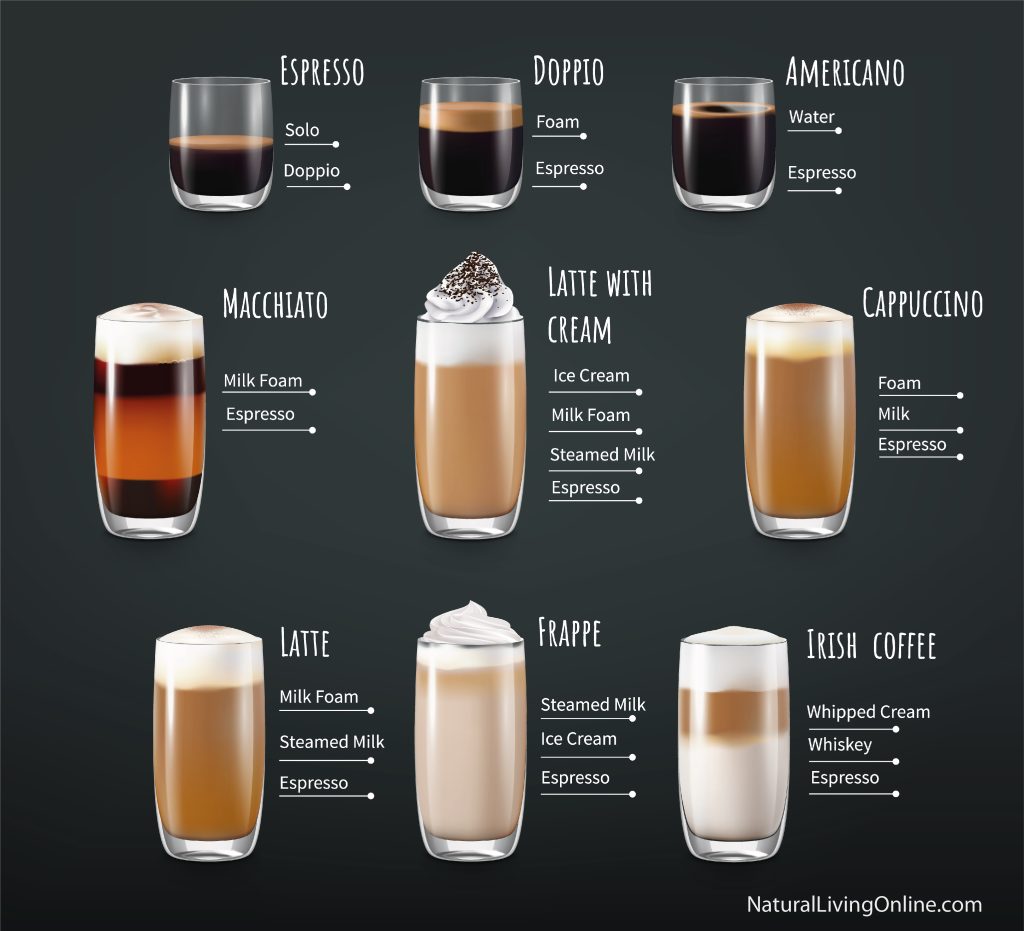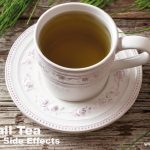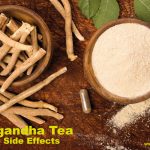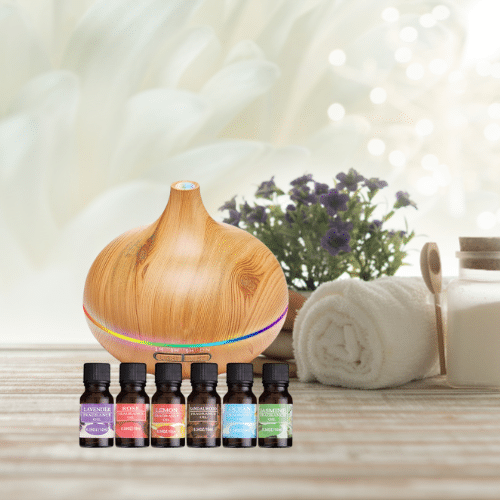Are you someone who relies on that morning cup of coffee to jumpstart your day? If so, have you ever wondered just how much caffeine you’re consuming with each sip? Coffee is one of the most popular beverages worldwide, cherished for its rich aroma, comforting warmth, and, of course, its invigorating effects. But when it comes to caffeine, the key component responsible for that much-needed boost, understanding its levels in coffee becomes essential for all coffee lovers.
Whether you’re an avid coffee aficionado or simply curious about the caffeine content in your daily brew, this article aims to enlighten and empower you with knowledge. So, grab your favorite mug and let’s embark on a journey to discover just how much caffeine is hiding in your average cup of coffee.
What is caffeine?
Caffeine is a naturally occurring substance classified as a stimulant that affects the central nervous system. It is found in various plants, including coffee beans, tea leaves, cocoa beans, and certain types of nuts. Caffeine is known for its ability to enhance alertness, improve focus, and combat fatigue, making it a popular ingredient in many beverages and even some food products.
When consumed, caffeine stimulates the release of neurotransmitters like dopamine and norepinephrine, which can result in increased brain activity and a heightened sense of wakefulness. This is why many people turn to caffeinated beverages, such as coffee, to help them feel more alert and energized throughout the day.
Apart from its stimulating effects, caffeine can also have other physiological impacts. It can temporarily raise blood pressure, increase heart rate, and even promote diuresis, which means it may make you need to urinate more frequently. These effects can vary depending on the individual and their sensitivity to caffeine.
One interesting aspect of caffeine is that it is a psychoactive substance. While it doesn’t produce significant alterations in perception or consciousness like other psychoactive substances, it does have the ability to alter mood, attention, and overall cognitive function to some extent.
It’s worth noting that caffeine is generally considered safe for most individuals when consumed in moderation. The threshold for moderation varies, but it is commonly defined as around 400 milligrams (mg) per day, which is roughly equivalent to four cups of brewed coffee. However, it’s important to keep in mind that individual sensitivity to caffeine can vary, and some people may experience side effects even with lower amounts.
In addition to coffee, caffeine is also present in other beverages like tea, energy drinks, and soda, as well as in certain medications and dietary supplements. Understanding the presence of caffeine in these products can help individuals make informed decisions about their overall caffeine intake and manage it accordingly.
Factors Affecting Caffeine Levels in Coffee
So how much caffeine is in your cup of coffee? That varies significantly due to several factors. Understanding these factors can provide insights into why different types of coffee might have varying caffeine levels. Let’s explore the key factors that influence caffeine content in coffee:
Coffee Bean Variety and Species
The species and variety of coffee beans used can impact caffeine levels. The two main species of coffee are Coffea arabica and Coffea robusta coffee beans. Generally, Coffea arabica beans have lower caffeine content compared to Coffea robusta beans. Arabica beans are the most common and highly regarded for their flavor, while robusta beans are often used in blends or for their higher caffeine content.
Roasting Process
The degree of coffee bean roasting affects caffeine levels. Contrary to popular belief, darker roasted beans do not necessarily contain less caffeine. While the roasting process can slightly decrease caffeine content, the difference is minimal. Therefore, the roast level has a negligible impact on caffeine levels in coffee.
Brewing Methods
The brewing method used can significantly influence caffeine extraction. The longer the contact time between water and coffee grounds, the more caffeine is extracted. Brewing methods such as espresso or French press, which involve prolonged extraction times, tend to result in higher caffeine concentrations. On the other hand, methods like drip brewing coffee or pour-over tend to extract less caffeine.
Serving Size
The amount of coffee you consume directly affects your caffeine intake. Larger serving sizes naturally contain more caffeine than small cup. It’s important to note that caffeine content is typically measured per fluid ounce or milliliter, so a standard cup of coffee (8 ounces) will have less caffeine than a larger serving, like a venti-sized coffee from a coffee shop.
While these factors contribute to variations in caffeine levels, it is challenging to determine the exact caffeine content of a cup of coffee without laboratory testing. However, understanding these influencing factors can provide a general idea of how caffeine levels can differ between various coffee types.
When it comes to the coffee drink caffeine content, it’s also crucial to consider that decaffeinated (decaf) coffee is not entirely caffeine-free. Decaffeination processes aim to remove most of the caffeine, but a small amount may still remain. Decaf coffee typically contains around 2 to 3% of the original caffeine content.
Average Caffeine Content in Different Coffee Types

Coffee comes in various forms and preparations, each with its own unique caffeine content. How much caffeine in coffee depends and varies due to factors we discussed earlier, let’s explore the average caffeine content found in different types of coffee:
Espresso
Espresso is a concentrated form of coffee brewed by forcing pressurized hot water through finely- ground coffee beans. Despite its small serving size (typically 1 to 1.5 ounces), espresso is known for its strong flavor and caffeine punch. On average, a single espresso shot contains around 63 milligrams (mg) of caffeine. Double shots or larger sizes will naturally have higher caffeine content.
Drip Coffee
Drip brewing is a popular method that involves pouring hot water over medium-coarse coffee grounds in a filter. The resulting freshly brewed coffee is typically enjoyed in larger servings. The caffeine content in a standard 8-ounce cup of drip coffee can range from 95 mg to 165 mg, depending on factors such as bean variety, roast level, and brewing strength.
Americano
An Americano is made by diluting espresso shots with hot water to create a larger and milder coffee beverage. The caffeine content in one cup of an 8-ounce Americano is comparable to regular drip coffee and can range from 95 mg to 165 mg, depending on the number of espresso shots used.
Latte and Cappuccino
Latte and cappuccino are espresso based drinks that incorporate steamed milk and foam. The milk added to these drinks dilutes the espresso, resulting in coffee drinks with a lower caffeine concentration compared to a straight shot of espresso. On average, a 12-ounce latte or cappuccino contains around 63 mg of caffeine, similar to a single shot of espresso.
Cold Brew
Cold brewed coffee typically made by steeping coffee grounds in cold water for an extended period, typically 12 to 24 hours. This brewing method tends to extract less of caffeine in a cup than hot brewing methods. Cold brew coffee typically has a smoother and less acidic flavor profile. The caffeine content in an 8-ounce cup of cold brew can range from 100 mg to 200 mg, depending on the brewing strength and coffee-to-water ratio.
Decaf Coffee
Decaffeinated coffee is processed to remove a significant portion of caffeine, although trace amounts may still remain. The exact caffeine content of brewed decaf coffee can vary, but on average, an 8-ounce cup of decaf coffee contains approximately 2 to 5 mg of caffeine. It’s important to note that decaf coffee is not completely caffeine-free.
These figures represent averages, and actual caffeine content can vary depending on several factors, including the coffee beans, brewing methods, and serving sizes. Additionally, specialty or flavored coffees may have different caffeine levels due to additional ingredients.
Being aware of the typical caffeine content in different coffee types can help individuals manage their caffeine intake based on their preferences and tolerance levels. It’s also worth noting that individual sensitivity to caffeine can vary, and some people may feel more or less affected by the same amount of caffeine. Understanding your own tolerance and balancing it with your desired caffeine consumption is key to enjoying coffee in a way that suits your needs.
Health Effects and Considerations
Caffeine, the primary active component in coffee, can have both positive and negative effects on health. Understanding caffeine’s effects and considering individual factors is important for making informed decisions about how much caffeine you should consume. Let’s explore the health effects and considerations associated with caffeine:
Benefits of Moderate Consumption
Moderate caffeine intake has been associated with several potential benefits. Caffeine can enhance alertness, concentration, and cognitive performance, which can be particularly helpful in combating fatigue and improving productivity. It may also provide a temporary boost in physical performance and endurance. Furthermore, some studies have suggested that moderate caffeine consumption may be linked to a reduced risk of certain conditions, such as Parkinson’s disease, type 2 diabetes, and liver disease.
Potential Risks of Excessive Intake
While moderate caffeine consumption is generally considered safe for most people, excessive intake can lead to adverse effects. High doses of caffeine can cause symptoms such as restlessness, anxiety, jitteriness, and insomnia. It can also contribute to increased heart rate, elevated blood pressure, and gastrointestinal disturbances. Some individuals may be more susceptible to these effects due to their sensitivity to caffeine.
Individual Sensitivity
The way individuals react to caffeine can vary significantly. Factors such as age, body weight, metabolism, and genetic differences can influence caffeine sensitivity. Some individuals may be more sensitive to the stimulating effects of caffeine, while others may have a higher tolerance. It’s important to pay attention to personal reactions and adjust caffeine consumption accordingly.
Sleep and Timing
Caffeine can interfere with sleep, especially if consumed close to bedtime. It is a good practice to avoid consuming caffeinated beverages within a few hours of intended sleep to minimize sleep disturbances. Caffeine’s stimulating effects can vary in duration, with effects typically lasting for several hours. Being mindful of the timing of caffeine intake can help maintain a healthy sleep routine.
Other Considerations
It’s crucial to consider other dietary and health factors when consuming caffeine. For individuals with certain medical conditions like high blood pressure, heart conditions, or gastrointestinal disorders, consulting with a healthcare professional about caffeine consumption is advisable. Additionally, being mindful of overall caffeine intake from various sources, including other beverages, foods, and medications, is important to avoid exceeding recommended limits.
Moderation and balance are key when it comes to caffeine consumption. It’s important to be aware of your own tolerance, consider individual sensitivities, and make choices that align with your health goals and lifestyle. If you have concerns about caffeine intake or its potential effects on your health, it’s always recommended to consult with a healthcare professional.
Practical Tips for Managing Caffeine Intake
If you’re looking to manage your caffeine consumption or make more informed choices about your coffee habits, here are some practical tips to help you keep drinking coffee less:
Determine Your Caffeine Tolerance
Start by understanding your individual sensitivity to caffeine. Pay attention to how your body reacts to different amounts of caffeine and adjust your intake accordingly. Some people may be more sensitive and require lower amounts to experience the desired effects, while others may have a higher tolerance.
Know Your Limits
Familiarize yourself with the recommended caffeine limits. In general, consuming up to 400 milligrams (mg) of caffeine per day is considered moderate intake for healthy adults. Keep in mind that caffeine content can vary depending on the type of coffee and serving size. Be mindful of the cumulative caffeine intake from other sources like tea, energy drinks, sodas, and certain medications.
Read Labels and Coffee Specifications
When purchasing coffee whether fresh or instant coffee, pay attention to labels or specifications that provide information on caffeine content. Some coffee brands or coffee shops may indicate the approximate caffeine levels in their products. This can help you make more informed decisions and choose coffee options that align with your desired caffeine intake.
Adjust Your Serving Size
Consider the serving size of your coffee. Larger cups or multiple servings per brewed cup naturally contain more caffeine. If you’re looking to reduce caffeine intake, consider downsizing your cup or opting for smaller servings. Be aware that some coffee shops offer various cup sizes, allowing you to customize your caffeine intake.
Explore Decaffeinated Options
If you enjoy the taste and ritual of coffee but want to reduce your caffeine intake, decaffeinated (decaf) coffee can be a suitable option. Decaf coffee undergoes a process to remove most of the caffeine, although trace amounts may still remain. It’s important to note that decaf coffee is not entirely caffeine-free, but it does offer a significantly lower caffeine content compared to regular coffee.
Experiment with Blends and Brews
Different coffee bean varieties, roasts, and brewing methods can result in varying caffeine levels and flavor profiles. Consider exploring different blends and brews to find options that suit your taste preferences and desired caffeine intake. For example, lighter roasts of coffee tend to have slightly higher caffeine content than darker roasts.
Be Mindful of Timing
Pay attention to the timing of your caffeine consumption. Avoid consuming caffeinated beverages too close to bedtime, as it can interfere with your sleep. Allow a few hours between your last caffeinated drink and your intended sleep time to minimize sleep disturbances and promote better sleep quality.
Consider Alternatives
If you’re looking to reduce your caffeine intake or want to enjoy non-caffeinated options, consider exploring alternative beverages. Herbal teas, such as chamomile or peppermint, can provide a soothing and caffeine-free option. Additionally, there are coffee substitutes available in the market that offer a similar taste experience without the caffeine content.
Remember, everyone’s caffeine needs and preferences are different. It’s important to listen to your body and make choices that align with your overall well-being. By implementing these practical tips, you can better manage your caffeine intake and enjoy coffee or alternative beverages in a way that suits your lifestyle and goals.
Conclusion
Caffeine is a widely consumed stimulant found in coffee, tea, and various other beverages. Understanding the factors that influence caffeine levels in coffee, such as bean variety, roasting process, brewing methods, and serving sizes, can provide valuable insights into the caffeine content of different types of coffee. While the exact caffeine content can vary, being aware of the average levels can help individuals make informed choices about their caffeine consumption.
Considering the health effects and considerations associated with caffeine is crucial for maintaining a balanced approach. Moderate caffeine intake can offer benefits such as increased alertness and improved cognitive performance. However, excessive consumption can lead to adverse effects, and individual sensitivity varies. Being mindful of personal reactions over consuming caffeine, considering sleep and timing, and understanding other dietary and health factors are essential for managing caffeine intake responsibly.
This website does not provide medical advice.
All information provided on this website, and on associated social media networks, including but not limited to texts, images, and numbers are for general information purpose only. It is not intended as medical advice and it does not include all possible precautions, side effects, or interactions that may occur. Neither NaturalLivingOnline.com nor its author/founder take responsibility for how you use this information. Statements contained on NaturalLivingOnline.com have not been evaluated by the FDA. You should conduct thorough research via multiple sources and consult your physician or qualified doctor before using any essential oil or herbal remedy. Information on NaturalLivingOnline.com must not be relied upon for medical, legal, financial or other decisions.









